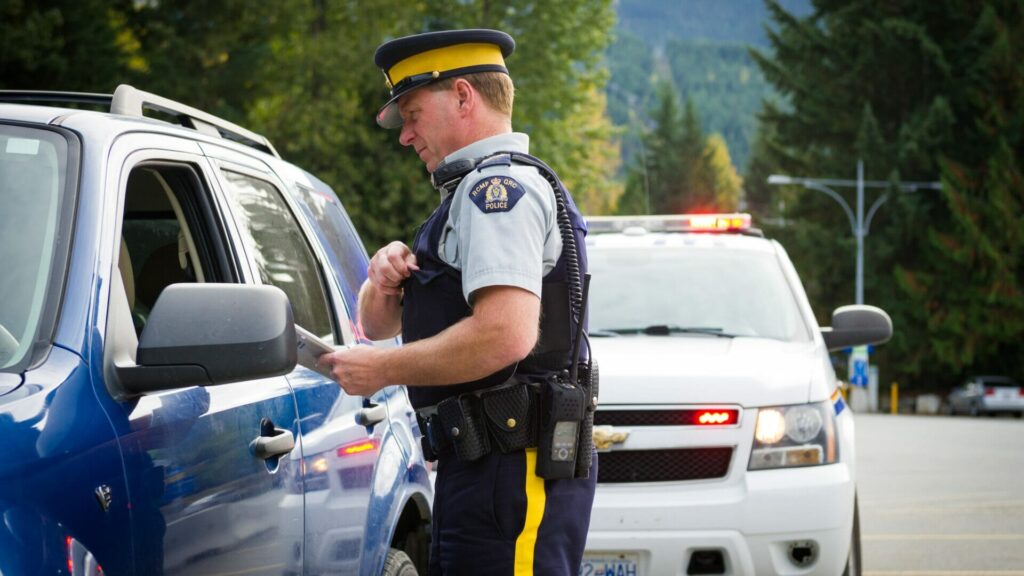our windshield does more than keep the wind out of your face – it’s a critical safety component of your vehicle. Across Canada, windshield damage regulations vary by province, creating a patchwork of standards drivers need to understand.
British Columbia’s Stringent Standards
British Columbia takes windshield integrity seriously, with specific rules outlined in the Motor Vehicle Act Regulations. These laws ensure windshields remain free of obstructions that could impair a driver’s view or compromise safety.
- Damage in the Primary Viewing Area: The wiper-swept area directly in front of the driver must remain free of damage that impairs visibility. While the exact thresholds can vary, any crack over 30 cm (12 inches) or multiple small chips can result in your vehicle failing to meet legal requirements. (bclaws.gov.bc.ca)
- Obstructions: Stickers, posters, or other materials that block your view of the road are strictly prohibited. This extends to anything mounted on the windshield or windows that interferes with visibility. (bclaws.gov.bc.ca)
- Safety Glass Standards: All windshield replacements in BC must use safety glass, as mandated by the regulations. Windshields must not be made of heat-treated or case-hardened glass to ensure proper safety during impact. (bclaws.gov.bc.ca)
Beyond these specific regulations, enforcement in BC can be discretionary. Police officers have the authority to ticket vehicles they deem unsafe due to windshield damage, even if the damage technically falls within allowable limits.
Provincial Variations Across Canada
Each province approaches windshield damage differently:
- Ontario focuses on ensuring the driver’s visibility, with less emphasis on specific measurements and more on whether damage obstructs the view of the road. Law enforcement can issue tickets for cracks or chips deemed hazardous.
- Manitoba has clear guidelines – any crack exceeding 20 cm (8 inches) qualifies as a violation, removing ambiguity but potentially overlooking smaller damage that might still be unsafe.
- Quebec employs strict inspection protocols. Even minor imperfections in the wiper-swept area can result in inspection failures, prioritizing visibility during adverse weather conditions.
Legal Consequences and Enforcement
Driving with a damaged windshield can lead to fines across Canada. In BC, under the Motor Vehicle Act Regulations, drivers can face a $70 fine for a windshield that impairs visibility. In severe cases, law enforcement may issue vehicle inspection orders or even impound vehicles deemed unsafe.
Beyond tickets, pre-existing windshield damage can complicate insurance claims and liability determinations in accidents. ICBC, for example, requires windshields to be free of significant damage to ensure the vehicle’s safety systems function as designed.

The Insurance Landscape
Insurance coverage for windshield damage varies significantly by provider and province. In BC, basic ICBC coverage excludes glass damage – drivers need comprehensive coverage for protection. Even with comprehensive coverage, deductibles often apply.
Most insurance companies prefer early chip repair over complete windshield replacement. Small repairs typically don’t affect premiums, while full replacements might. Some providers offer specific glass coverage with reduced or zero deductibles.
Environmental Factors and Safety Implications
Canadian weather creates unique challenges for windshield integrity. Daily temperature fluctuations, especially during spring and fall, can transform minor chips into major cracks. The physics behind this is simple – glass expands and contracts with temperature changes, stressing existing damage points.
Winter presents additional risks. Ice scrapers can aggravate existing damage, while rapid temperature changes from defrosters stress the glass. Road salt and gravel increase impact frequencies, and cold temperatures make glass more brittle.
Preventive Measures and Best Practices
Smart drivers approach windshield damage proactively. Maintaining safe following distances behind gravel trucks prevents many chips and cracks. Addressing small chips immediately before they spread saves money and time. Using quality wipers prevents scratching, while avoiding sudden temperature changes protects glass integrity. Regular cleaning helps spot damage early.
The Role of Windshields in Vehicle Safety
Modern windshields contribute significantly to vehicle structural integrity. They support roof strength during rollovers, ensure proper airbag deployment, protect from ejection during collisions, and block harmful UV radiation.
Any compromise to windshield integrity affects these safety functions. What starts as a small chip can undermine your vehicle’s entire safety system. Getting repairs early saves money and keeps you safer on Canadian roads.


